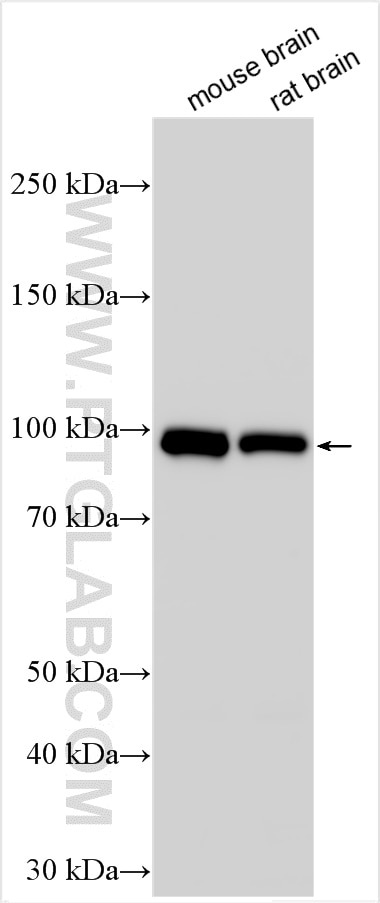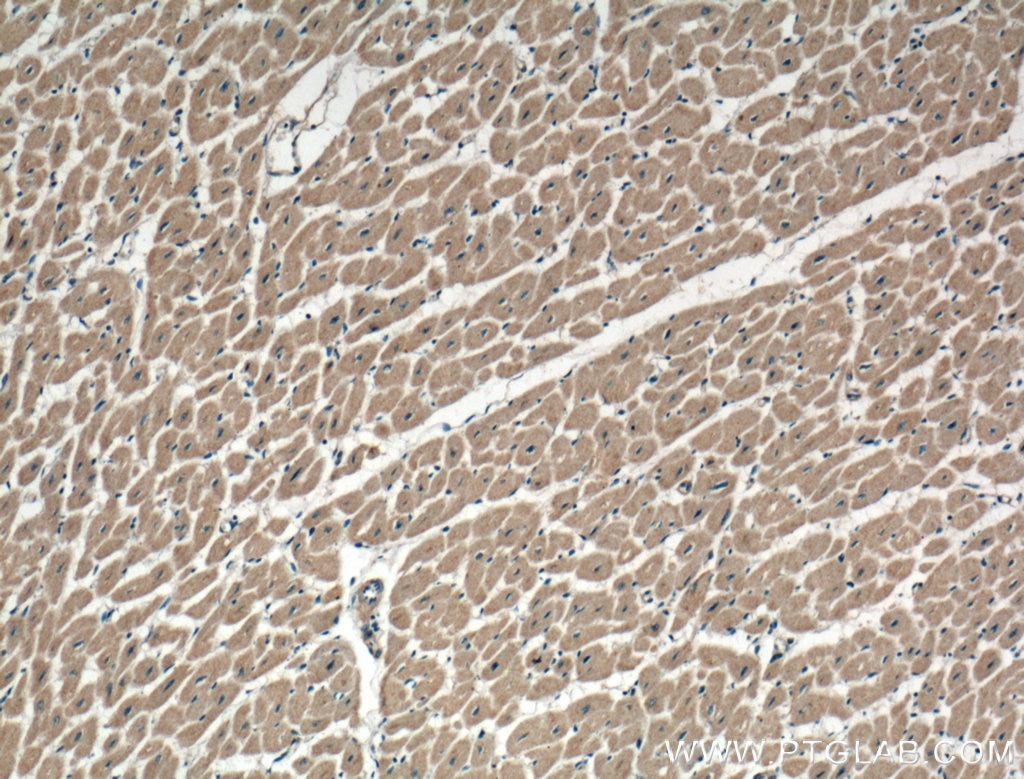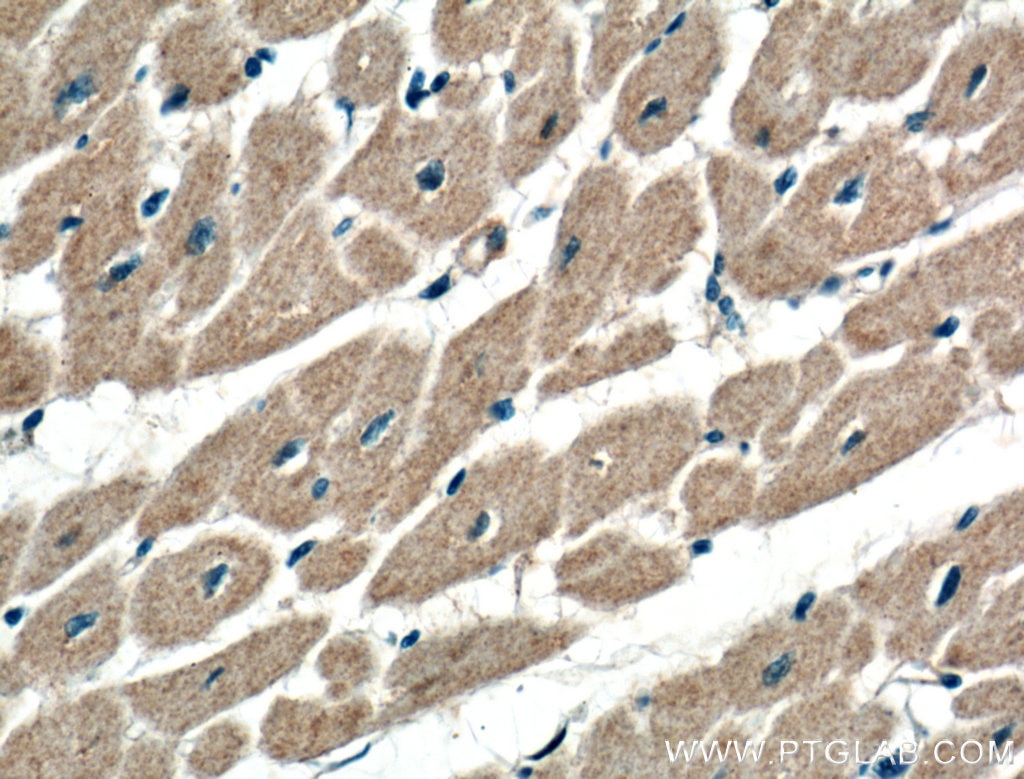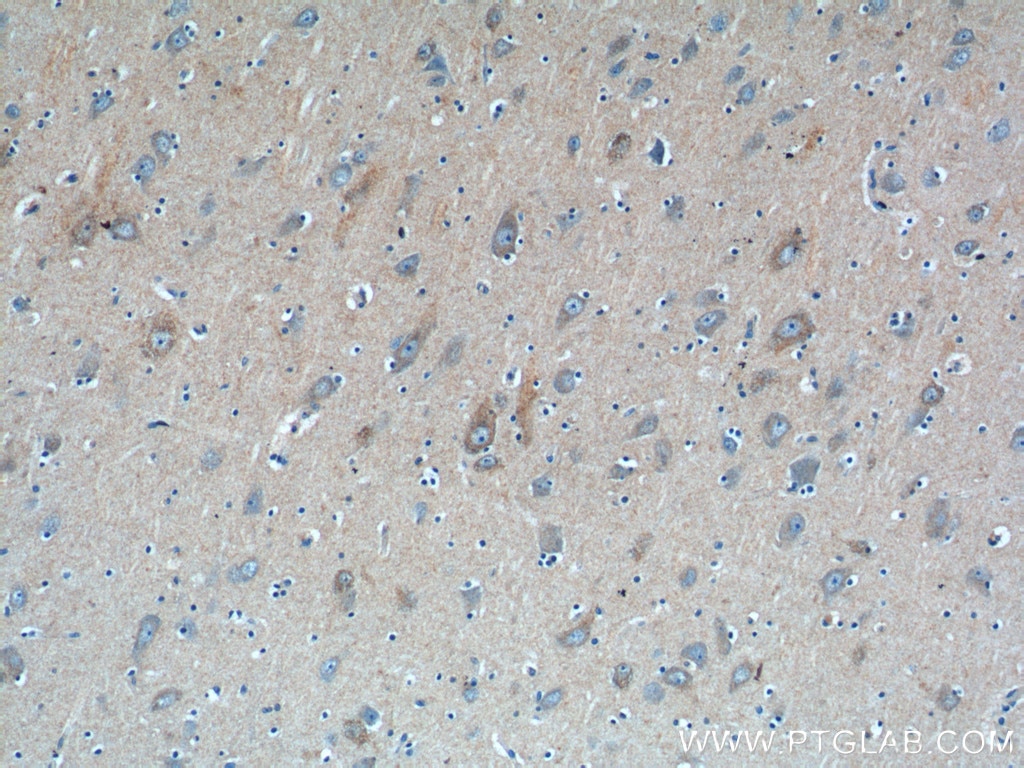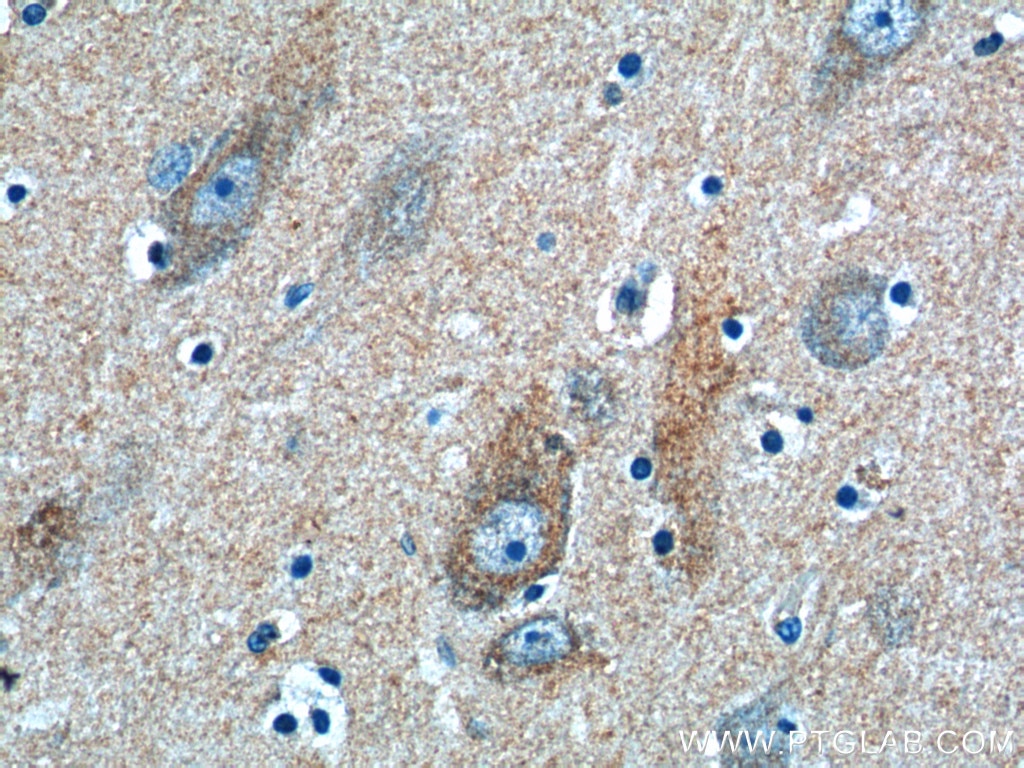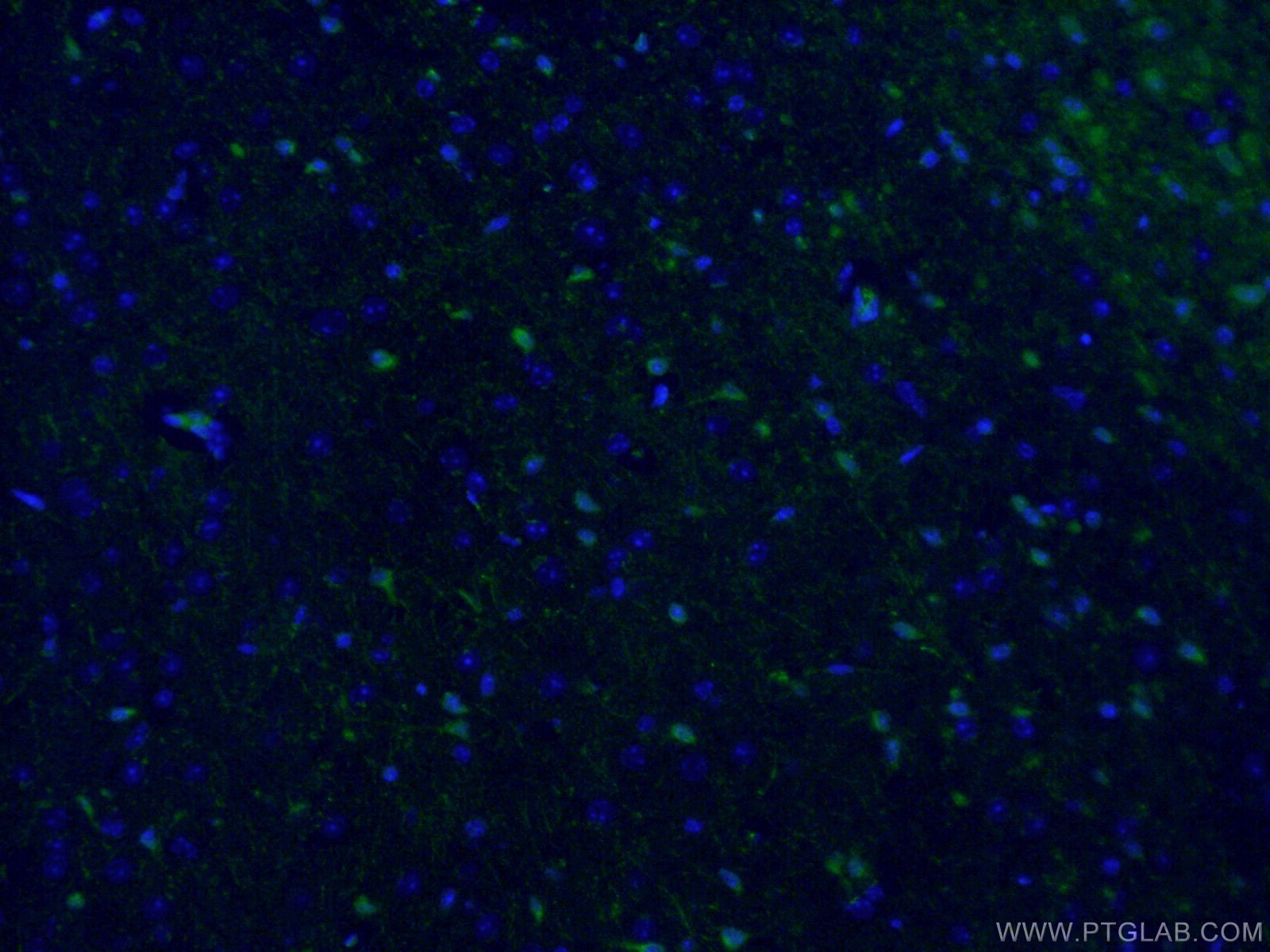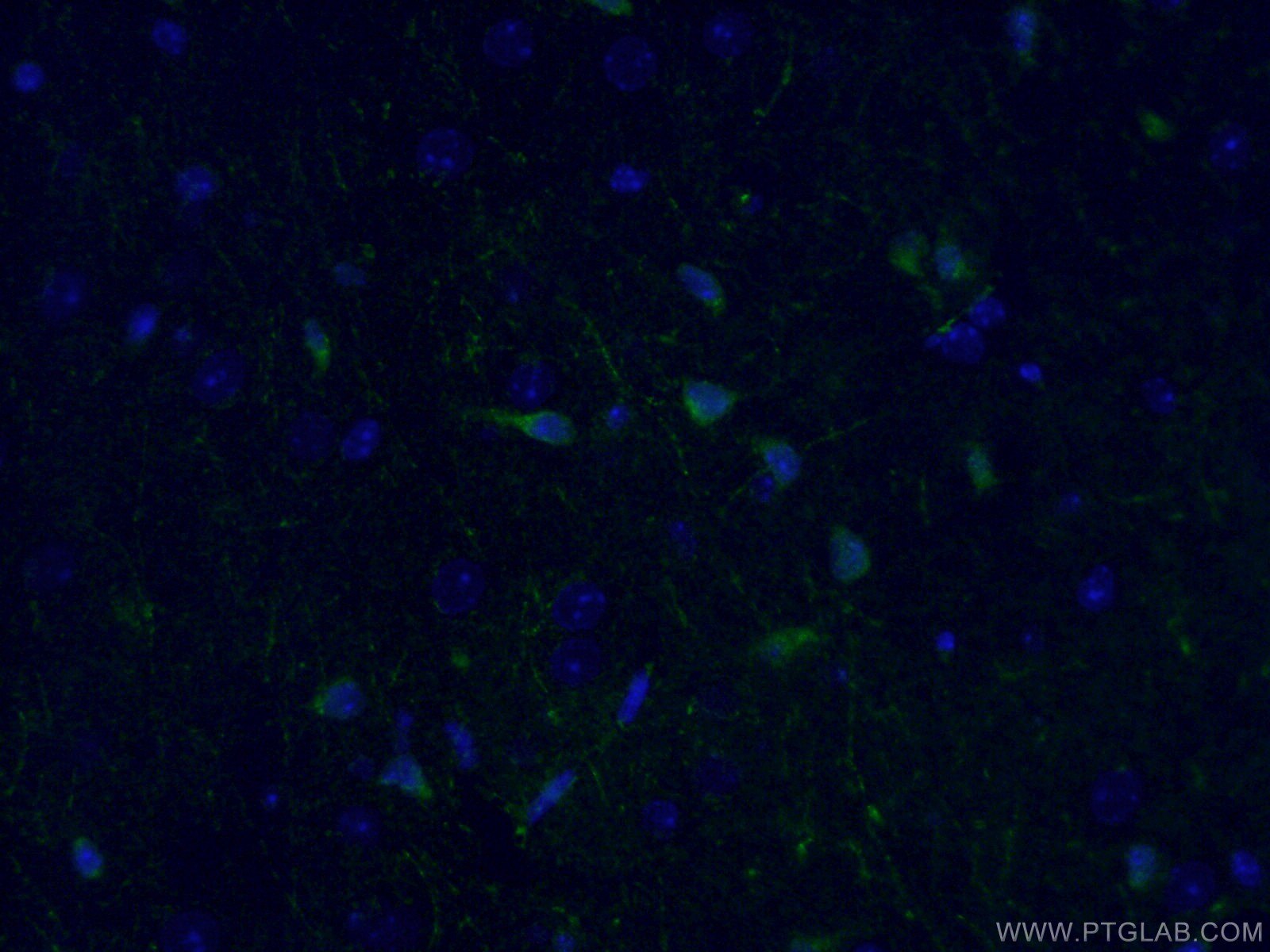Anticorps Polyclonal de lapin anti-ATG9A
ATG9A Polyclonal Antibody for IF, IHC, WB, ELISA
Hôte / Isotype
Lapin / IgG
Réactivité testée
Humain, rat, souris
Applications
WB, IHC, IF, ELISA
Conjugaison
Non conjugué
N° de cat : 26276-1-AP
Synonymes
Galerie de données de validation
Applications testées
| Résultats positifs en WB | tissu cérébral de souris, tissu cérébral de rat |
| Résultats positifs en IHC | tissu cardiaque humain, tissu cérébral humain il est suggéré de démasquer l'antigène avec un tampon de TE buffer pH 9.0; (*) À défaut, 'le démasquage de l'antigène peut être 'effectué avec un tampon citrate pH 6,0. |
| Résultats positifs en IF | tissu cérébral de souris, |
Dilution recommandée
| Application | Dilution |
|---|---|
| Western Blot (WB) | WB : 1:500-1:2000 |
| Immunohistochimie (IHC) | IHC : 1:50-1:500 |
| Immunofluorescence (IF) | IF : 1:50-1:500 |
| It is recommended that this reagent should be titrated in each testing system to obtain optimal results. | |
| Sample-dependent, check data in validation data gallery | |
Applications publiées
| WB | See 5 publications below |
Informations sur le produit
26276-1-AP cible ATG9A dans les applications de WB, IHC, IF, ELISA et montre une réactivité avec des échantillons Humain, rat, souris
| Réactivité | Humain, rat, souris |
| Réactivité citée | rat, Humain, souris |
| Hôte / Isotype | Lapin / IgG |
| Clonalité | Polyclonal |
| Type | Anticorps |
| Immunogène | ATG9A Protéine recombinante Ag24212 |
| Nom complet | ATG9 autophagy related 9 homolog A (S. cerevisiae) |
| Masse moléculaire calculée | 837 aa, 94 kDa |
| Poids moléculaire observé | 94 kDa |
| Numéro d’acquisition GenBank | BC065534 |
| Symbole du gène | ATG9A |
| Identification du gène (NCBI) | 79065 |
| Conjugaison | Non conjugué |
| Forme | Liquide |
| Méthode de purification | Purification par affinité contre l'antigène |
| Tampon de stockage | PBS avec azoture de sodium à 0,02 % et glycérol à 50 % pH 7,3 |
| Conditions de stockage | Stocker à -20°C. Stable pendant un an après l'expédition. L'aliquotage n'est pas nécessaire pour le stockage à -20oC Les 20ul contiennent 0,1% de BSA. |
Informations générales
ATG9A is the only transmembrane ATG protein essential for autophagy. It plays a key role in the organization of the preautophagosomal structure/phagophore assembly site (PAS). It has been reported that ATG9A expression is increased in oral squamous cell carcinoma and breast cancers. The inhibition of ATG9A can lead to an inhibition of cancer cell proliferation and invasion.(PMID: 29437695, 29568063)
Protocole
| Product Specific Protocols | |
|---|---|
| WB protocol for ATG9A antibody 26276-1-AP | Download protocol |
| IHC protocol for ATG9A antibody 26276-1-AP | Download protocol |
| IF protocol for ATG9A antibody 26276-1-AP | Download protocol |
| Standard Protocols | |
|---|---|
| Click here to view our Standard Protocols |
Publications
| Species | Application | Title |
|---|---|---|
Acta Pharm Sin B MicroRNA-34c-5p provokes isoprenaline-induced cardiac hypertrophy by modulating autophagy via targeting ATG4B. | ||
Front Immunol MicroRNA-34a Inhibition Alleviates Lung Injury in Cecal Ligation and Puncture Induced Septic Mice. | ||
DNA Cell Biol Long Noncoding RNA KIF9-AS1 Regulates Transforming Growth Factor-β and Autophagy Signaling to Enhance Renal Cell Carcinoma Chemoresistance via microRNA-497-5p. | ||
Mol Neurobiol RAB7A GTPase Is Involved in Mitophagosome Formation and Autophagosome-Lysosome Fusion in N2a Cells Treated with the Prion Protein Fragment 106-126 | ||
Cell Biol Int TFAM knockdown undermines SQSTM1 mRNA stability but retards autophagy flux and inhibits tumor cells proliferation under starvation conditions |
Avis
The reviews below have been submitted by verified Proteintech customers who received an incentive forproviding their feedback.
FH Priya (Verified Customer) (06-21-2023) | Used this antibody for Caco2 cells andmice tissue
|
FH Priya (Verified Customer) (06-21-2023) | Used this antibody for Caco2 cells and mice tissue
|
